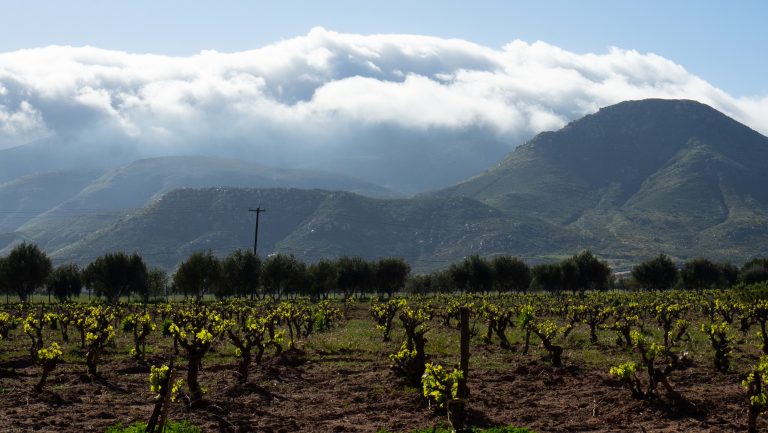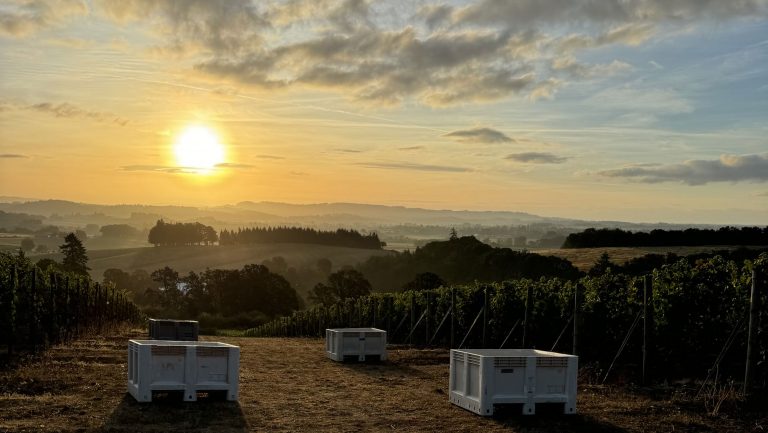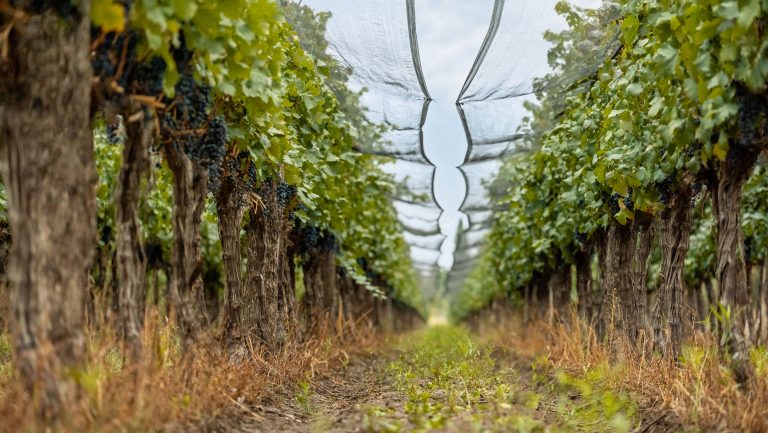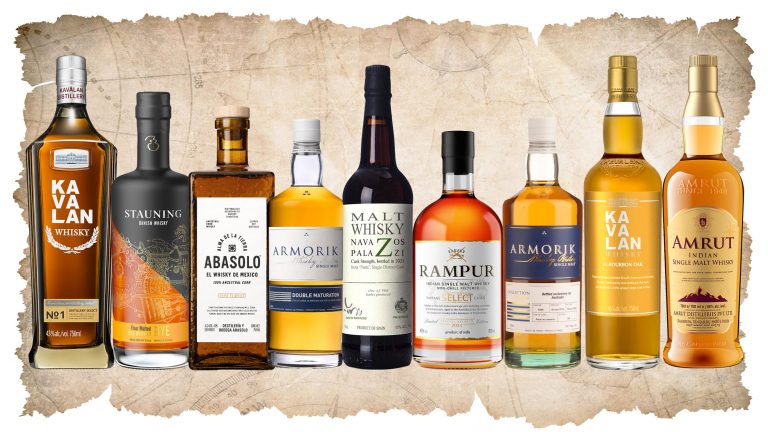Winemaking roots run deep in the Valle de Guadalupe—dating back to 1683 when Spanish missionaries coaxed vines in Mexico’s Baja peninsula into sacramental wine. Most of the valley’s vines were abandoned or ripped out after Mexico’s War of Reform, revived by Russians who settled in the region in the early 1900s, then neglected as Prohibition passed and large-scale spirits production grew and commandeered the grapes.
For decades, winemaking went dark, forgotten by all but a few committed producers. “By 1997, only 10 wineries remained,” says Pedro Poncelis Raygoza, the owner of Vinícola Punto y Aparte. “The wine industry had collapsed. Grape growers had no one to sell to. There was no tourism infrastructure to support interest—even if someone did want to visit, there were no hotels or restaurants.”
This hasn’t sat well with a new generation of winemakers and grape growers. Over the last 20 years, Baja winemaking has been lured out of its slumber, weaving together tradition with new techniques. Now, the region is being propelled forward with new energy.

Don’t miss the latest drinks industry news and insights. Sign up for our award-winning newsletters and get insider intel, resources, and trends delivered to your inbox every week.
A Lay of the Land
The Valle de Guadalupe is situated 90 minutes south of San Diego and runs west to east, starting on the shores of Ensenada where wines have a salty, maritime influence. Further from the coast, the landscape shifts into rusty, moon-like hills and hot valley floors, speckled with gnarled bush vines settled between desert landscapes and clay haciendas. Up the flanking mountains, the temperature dips then drops dramatically at night—swinging between 22 and 88 degrees Fahrenheit—creating a cool climate for slower-ripening grapes.
In the 1990s, the valley was dotted with growers, though the majority would cultivate the land then sell the grapes off to a few large producers. It wasn’t until a small wine school—Estación de Oficios del Porvenir, known locally as La Escuelita—opened in Ensenada in 2004 and sparked reinvigoration in the region that curious grape growers gained the autonomy and knowledge to make their own wines instead of offloading their harvests for income.
Two decades later, almost 200 winemakers call Valle de Guadalupe home. With roughly 11,000 acres under vine, 90 percent of Mexico’s wine hails from this region.
A Changing of the Guards
Mogor Badan winemaker Natalia Badán has become one of the figureheads of the region. She’s a second-generation steward of the land, having inherited the ranch from her Swiss-French parents who built the property from scratch in the ’50s. From their land, she cultivates expressive Bordeaux varieties and works with heartland Swiss grapes like Chasselas.
As Badán works, her son Juan Cristobal Rubio Badán is often by her side, learning how to carry the torch. But on the side, he’s turning Baja herbs and botanicals into a slightly bitter but highly aromatic aperitif with notes of blood orange and sage. After spending time abroad in Spain, he strongly believes that vermouth culture could be transplanted here.
His partner, winemaker Violeta Jiménez, comes from three generations of grape growers, but she is the first in the family to work with their grapes rather than sell them. Her pale copper, perfumed pét-nat, La Monema, is a snapshot of her family’s history.
“There’s a young generation of people whose parents were growers—they grew up with ties to what was happening in wine without having the infrastructure of a winery themselves,” says Stephen Ott, an Arizona-based sommelier who imports Mexican wines to the United States via Nossa Imports. “Their parents set up projects. Now, the kids are reforming their parents’ work.”

Winemaker Juan Carlos Bravo of JC Bravo Vinicola—the only winemaker to be born and raised in the Valle—tends to gnarled bush vines planted in bright red clay by his grandparents in the 1940s. It took his grandfather decades of masonry work to be able to buy the legacy land and today, Bravo is careful to respect it; he uses only rainwater to irrigate the vines on the valley floor and relies solely on family members to make the wine.
Down the road, Bravo’s sons, Juan Carlos Jr. and Tomas, plan to take over production, while his daughters, Karla and Alejandra, are in charge of hospitality. All four children are also responsible for picking, bottling, and labeling. “I love this job,” says Karla. “Our elders are responsible for keeping the culture and tradition of these lands alive. We need to keep sharing it.”
Raygoza spent the start of his career as a sommelier, named the best in Mexico by the Association de la Sommellerie Internationale. After enrolling in Estación de Oficios del Porvenir, he founded Vinícola Punto y Aparte to apply his knowledge in a practical form.
Raygoza is focused on French varieties—Grenache, Syrah, Merlot, and Mourvèdre—but as his children enter their 20s, he’s letting each of them explore winemaking by way of whatever varieties they’re drawn to. The first made a Nebbiolo in 2019. The next, an acid-kissed Chenin Blanc, and the youngest, an easygoing pétillant naturel from white Grenache. “They’re a work in progress,” Raygoza admits. But he knows the future of the valley lies in the next generation, so he’s giving them free reign to experiment.
“We’ve been in a renaissance of Mexican winemaking, where large, establishing, and foundational steps have been taken,” says Ott. “Now, we’re seeing the work of the first generation be interpreted and changed by the next generation. This is where we’re going to see some crazy innovation coming from.”

Defining a Region
While the region’s viticulture has developed over centuries, Baja wine still faces misconceptions. “When you mention Mexican wine to Americans, they’ll fall in one of three camps,” says Ott. “Most say, ‘Mexico makes wine?’” Only a few understand the region’s potential, while others think the wines are big and burly; hot, over-extracted, and over-oaked.
But the valley is diverse—it’s possible to grow cooler-climate whites in the foothills of the mountains and Spanish-accented reds down below. And the future potential is promising. “It’s so hard to define the wine region because even though it’s one of the oldest wine regions in the world, I’d only consider it 35 years old,” says Raygoza. “If you ask me what type of grape I think is best here, I couldn’t say. We just don’t have the history to know. Maybe Portuguese varieties? Mencía could do great here!”
Cristina Pino Villar recently took over the role of head enologist at Bodegas de Santo Tomas, the longest-running winery in Ensenada. In her new role, she’s one of the few producers exploring Chenin Blanc—she says the elevation and the diurnal shift in the Valle de Guadalupe is ideal for ripening the French variety. She’s making full, dry, and hyper-classic Chenin Blancs with a distinct hint of saline and less classic, high-energy Chenin pét-nats. Why? “It’s what our youth are drinking,” she says. “If we want them to care about Mexican wine, we have to make products for them, too.”
There’s a real energy for Mexican wine from the younger generations, and not just from those involved in production. Walk into Bloodlust—a mimetic, garlic bulb-shaped bar in the center of a dirt plane—and Mexican pét-nats and vermouths from across the peninsula are poured by young servers ready to share sips of Mexican wine. In contrast, a new wine bar in Ensenada only serves international wines—on any given night, it’s packed with winemakers, sommeliers, hospitality workers, and 20-somethings, eager to expand their knowledge and bring it back to the Valle.
“There’s such a sense of optimism and innovation here,” says Ott. “And it’s so rooted in a desire to re-express history.”

Dispatch
Sign up for our award-winning newsletter
Don’t miss the latest drinks industry news and insights—delivered to your inbox every week.
By day, Kate is a writer, editor, and photographer covering the intersection between spirits, business, culture, and travel. By night, she’s a WSET-trained working sommelier at one of the top restaurants in Canada. She writes about strong drinks and nice wines for Forbes.com, Wine Enthusiast, Vogue, Maxim, InsideHook, People Magazine, Southern Living, Liquor.com, and The Toronto Star.








